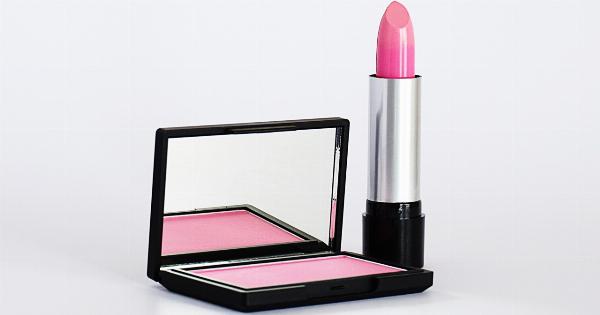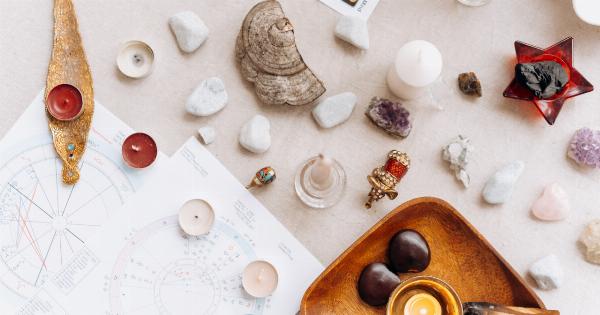Have you ever stopped to think about the impact cosmetics have on your hormonal balance? It’s not just about looking good, but the chemicals found in these products can disrupt your endocrine system and cause a havoc on your hormones.
In this article, we will delve into the dangers of certain cosmetics and how they can wreak havoc on your hormonal health.
The Endocrine System and Hormonal Balance
The endocrine system is a complex network of glands that produce and secrete hormones, which regulate various functions in the body. These hormones play a vital role in maintaining overall health, including growth, metabolism, reproduction, and mood.
When this delicate balance is disrupted, it can lead to numerous health issues.
Chemicals in Cosmetics that Disrupt Hormonal Balance
Cosmetics are jam-packed with a variety of chemicals, many of which have been linked to hormone disruption. Let’s take a closer look at some of the most common culprits:.
1. Parabens
Parabens are a type of preservative used in cosmetics to prevent the growth of bacteria and fungi. However, they have been found to mimic estrogen in the body.
These estrogenic properties can disrupt the endocrine system and potentially lead to hormonal imbalances.
2. Phthalates
Phthalates are often used in fragrance formulations. These chemicals have been linked to various health issues, including disruption of the endocrine system.
Phthalates can interfere with hormone production and regulation, potentially leading to hormonal havoc.
3. Synthetic Fragrances
Synthetic fragrances found in cosmetics can contain a complex mixture of chemicals, some of which are known to disrupt hormone balance. These chemicals can enter the body through inhalation or skin absorption, leading to hormonal disruption.
4. Lead
Lead is a toxic heavy metal that has been found in certain cosmetics, especially in lipsticks and lip products. Exposure to lead can disrupt hormone production and regulation, leading to hormonal imbalance.
It can also have detrimental effects on various organs, including the reproductive system.
5. Formaldehyde-releasing Preservatives
Formaldehyde-releasing preservatives, such as DMDM hydantoin and diazolidinyl urea, are commonly found in cosmetics. These preservatives gradually release formaldehyde, which is a known carcinogen and hormone disruptor.
Prolonged exposure to formaldehyde can have serious implications for hormonal health.
6. Synthetic Colorants
Synthetic colorants, such as coal tar dyes, are often used in cosmetics to add vibrant colors. Some of these dyes have been associated with hormone disruption.
Long-term use of cosmetics containing these synthetic colorants can have adverse effects on hormonal balance.
7. Sunscreen Chemicals
Sunscreens often contain chemicals like oxybenzone and octinoxate, which can disrupt hormone function. These chemicals can mimic estrogen in the body and interfere with the normal functioning of the endocrine system, leading to hormonal havoc.
8. Triclosan
Triclosan is an antimicrobial agent used in many personal care products, including cosmetics. This chemical has been found to interfere with hormone regulation and may contribute to hormonal imbalances.
Additionally, overuse of triclosan can also lead to antibiotic resistance.
9. Retinol
Retinol, a form of vitamin A often found in anti-aging products, can have detrimental effects on hormonal balance when used in excess. High levels of vitamin A can lead to toxicity, which can disrupt the endocrine system and cause hormonal havoc.
10. Aluminum Compounds
Aluminum compounds, such as aluminum chlorohydrate or aluminum zirconium, are commonly found in antiperspirants. These compounds can interfere with estrogen receptors and disrupt hormone balance.
Prolonged use of antiperspirants containing aluminum compounds may have long-term consequences on hormonal health.
The Health Consequences of Hormonal Imbalance
The disruption of hormonal balance caused by these cosmetic chemicals can have far-reaching health consequences. Hormonal imbalance has been linked to various conditions, including:.
1. Infertility
Hormonal imbalance can disrupt reproductive function and contribute to infertility in both men and women. It can affect ovulation, sperm production, and hormone production necessary for conception.
2. Irregular Menstrual Cycles
Hormonal imbalances can result in irregular or abnormal menstrual cycles. Women may experience heavy or prolonged periods, missed periods, or hormonal conditions such as polycystic ovary syndrome (PCOS).
3. Mood Disorders
Hormonal balance is closely linked to mood regulation. Disruption of this delicate balance can contribute to mood disorders such as depression, anxiety, and irritability.
4. Increased Cancer Risk
Some chemicals found in cosmetics, such as parabens and formaldehyde-releasing preservatives, have been associated with an increased risk of certain cancers.
Hormonal disruption can play a role in the development of hormone-related cancers, including breast and prostate cancers.
5. Thyroid Issues
The endocrine system also includes the thyroid gland, which regulates metabolism. Hormonal imbalances can lead to thyroid disorders, such as hypothyroidism or hyperthyroidism, which can have widespread effects on overall health.
Protecting Your Hormonal Health
While it may be impossible to completely avoid cosmetics and their potential effects on hormones, there are steps you can take to minimize your exposure and protect your hormonal health:.
1. Choose Natural and Organic Products
Opt for cosmetics that are free from harmful chemicals and made with natural and organic ingredients. Look for products that are certified organic and free from parabens, phthalates, and synthetic fragrances.
2. Read Labels Carefully
Pay attention to the ingredients list on cosmetic products and familiarize yourself with the common chemicals that can disrupt hormones. Avoid products that contain these harmful substances.
3. Opt for Fragrance-Free Options
Synthetic fragrances can be a major source of hormone-disrupting chemicals. Choose fragrance-free or naturally scented products to minimize your exposure.
4. Minimize the Use of Antiperspirants
Consider limiting the use of antiperspirants that contain aluminum compounds. Alternatively, opt for natural deodorants that do not interfere with the normal functioning of your sweat glands.
5. Research and Choose Safer Sunscreens
Look for sunscreens that use physical blockers like titanium dioxide or zinc oxide instead of chemical sunscreens. These physical blockers are less likely to disrupt hormone balance.
6. Consider DIY Cosmetics
If you have concerns about the ingredients in store-bought cosmetics, consider making your own products using natural ingredients. There are plenty of online resources and recipes available for homemade cosmetics.
Conclusion
While cosmetics can enhance our appearance, it’s crucial to be aware of the potential harm they can cause to our hormonal health.
The chemicals found in many cosmetics can disrupt the delicate balance of hormones in our bodies, leading to various health issues. By opting for natural and organic products and being cautious of the ingredients we expose ourselves to, we can protect our hormonal health and overall well-being.































